Text
I am happy to share my latest blog for The Nile Scribes. My partner Hannah made the point that the essential oils market has been booming (and is expected to continue doing so) over the last few years. It led me to explore the wonderful world of Egyptian perfumery and their use of essential oils. Find out what duck fat, cinnamon, and water lilies have in common - read on!
4 notes
·
View notes
Text
Frogs and many other animals were popular motifs that were adapted in various ways into the material world of the ancient Egyptians. During the Predynastic Period, we have many such depictions on pottery vessels and in some cases they may have an animal shape! One such example came to my attention very recently: a frog-shaped vessel that is in the collection of the Phoebe A. Hearst Museum of Anthropology (6-17171).
Where was it found?
Archaeologists found the vessel in a tomb at Naga ed-Dêr (in southern Egypt) from over 5,000 years ago. The tomb itself appears to be that of an adult male, though its contents were disturbed with only a few objects in their original position. The vessel itself is made of limestone and measures just c. 8-9 cm in length.
What makes this vessel so unique?
The frog’s eyes are inlaid with shell and there are more spots around its body that show inlays of turquoise and lapis-lazuli. While Egyptians would have acquired turquoise via mines on the Sinai Peninsula, lapis-lazuli came from much, much further away. The most likely source seems to be the Badakhshan region in northeastern Afghanistan, over 4,000 km to the east of Egypt! To see it integrated here into the frog-shaped vessel must have reinforced notions of wealth and status of the tomb owner.
Photos courtesy of the Phoebe A. Hearst Museum of Anthropology.
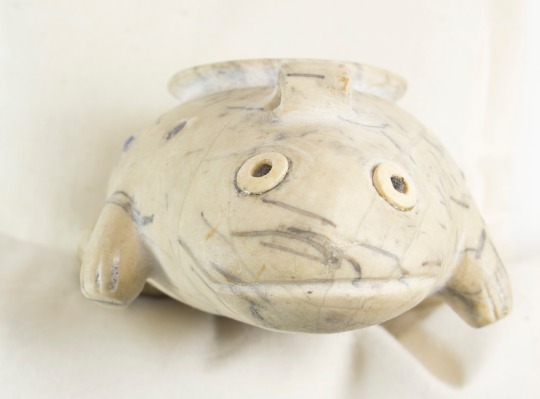

0 notes
Text
Happy to share my latest blog on all things Egyptian gardens. Writing about where to find them, what types there are, and above all: what flowers and trees did Egyptians cultivate? Enjoy.
1 note
·
View note
Photo
Great photo that highlights so well how different Egypt’s landscape looked only 100 years ago.

A partially-submerged tree near the pyramids as the Nile overflows its banks (Cairo, 1900).
8K notes
·
View notes
Text
I finally got around to reading Angela Stienne’s excellent take on the use of Egyptian mummies going back several centuries. From being part of early anatomical collections to being a major element in racial studies, I was taken back by how little the actual mummy was interpreted within its actual context: the remains of an actual Egyptian! It was also hard to read how in several cases the presentation of mummies has changed little over the past centuries. I highly recommend this article especially also the many references to important readings on the subject.
Reference:
Stienne, A. 2019. “‘To Turn Round a Dead’: Engagements with Egyptian Mummies in London at the Turn of the Nineteenth Century.” Papers from the Institute of Archaeology 28 (1): 1–28.
The article is available for download here.
1 note
·
View note
Video
youtube
The video above, an interview between Philippe Matthews and Dr. Solange Ashby, presents several important insights into Egyptology’s lack of engagement with outside, diverse voices. I found the interview very educational in taking to task the key notions of our field, which really need to be reconsidered. Have a listen.
1 note
·
View note
Text
Great response to some questions that I have seen in Social Media about the removal of statues!
Just a note: The removing hagiographic memorialisations is not an ‘erasure of history’ as so many are touting. Hagiographic memorialisations are, by nature, excessively flattering depictions of a person that often whitewash or obscure reality.
In removing the statues of those whose wealth and power was derived from the kidnap, owning, selling, and often murder of human beings, we are not ‘erasing history’. That’s not how history works. Removing one statue does not erase someone’s history. It does not change what they did. These men had hagiographic monuments erected of them, often by others years after their death, and notably after the abolition of slavery, which ‘flattered’ their ‘philanthropy’, but whitewashed how they came by that money in the first place. The people who erected these monuments knew how these men got their money, and deliberately omitted it. Even now, when asked to update plaques for these statues, those in power will continue hagiography and omit the important details either through shame or willful ignorance.
The erasure of history comes when we fail to face up to it. You cannot accept a person’s ‘philanthropy’ without also acknowledging in full where the money came from. You cannot say ‘look at all the good they did for these orphans’ without also acknowledging that they were responsible for orphaning children by kidnapping their parents and selling them into slavery, or throwing sick children overboard to drown because they were no longer valuable. By leaving a statue like that, in its place, without proper acknowledgement of why and how that person came to be memorialised, then it is already participating in the erasure of history. It effectively states ‘the people who were kidnapped, sold, or drowned, do not matter because he used the money he got from selling them to feed some orphans’. It memorialises the notion that the lives of the people in this country matter more than the lives of the people kidnapped and sold for profit in a foreign land. It reinforces the idea that feeding a few hundred orphans, and constructing some buildings, mattered more than the hundreds of thousands of lives torn apart when they were ripped from their homes, put onto boats, sold in a foreign land, and died with no one to memorialise their real names. If a statue of a person such as this, remaining in place, matters more to you than acknowledging the full history behind the reason it exists in the first place, then there is nothing more to say. You already know what you are.
The defacement, and removal of statues of people who no longer represent our ideals or morals, is a time honoured historical tradition. A practice of millennia for people who say ‘no more of this’. We still have these toppled statues, their history is not gone. They are a reminder that ideas and monuments are not permanent, and their removal often comes at a time of great upheaval. Changes in human history are often marked by the fall of statues and monuments, yet we still remember them. Time and history march on. You either go with it and grow with the changes, or remain stagnant and see yourself consigned to the relics of a history that refused to acknowledge its own reality.
304 notes
·
View notes
Text
Recently I decided that I make one day a week a day where I just spend time with my family. Being a busy post-graduate student, free-time seems hard to come by, but this is where reshaping my priorities become important. I have made a schedule for my work from Monday to Saturday and today is the day where I can just enjoy the family life. My son who is turning three in a few months is such a joy to watch exploring the world around him. For our family day today, we decided to walk towards Toronto’s Milkman Lane which leads down to the Yellow Creek. The creek we followed then all the way north-west to St. Clair. See our route here:

There is also a dedicated group called Lost River Walks in Toronto that details the histories of creeks like this one. Many creeks now of course lie hidden in many places underneath the urban infrastructure.

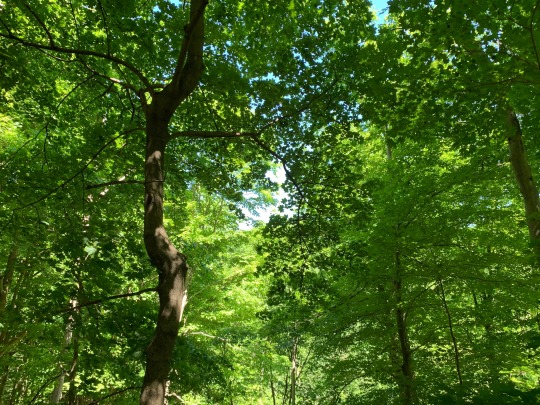
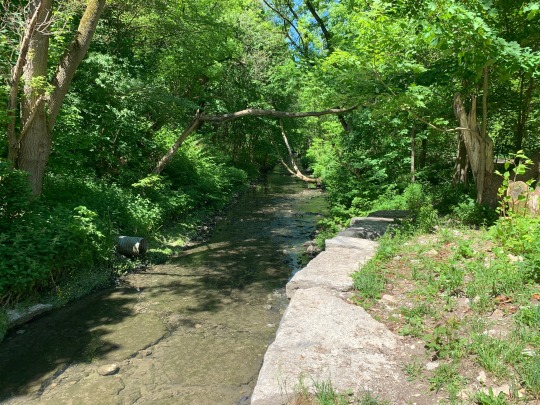
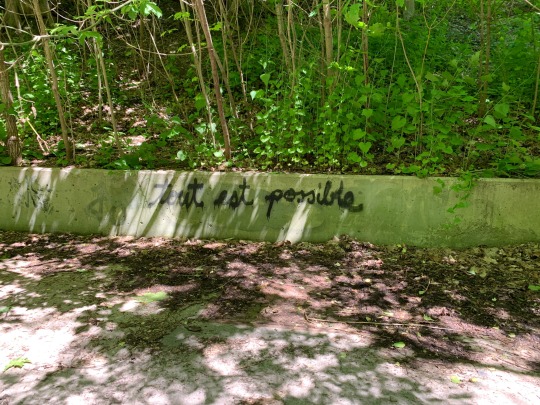
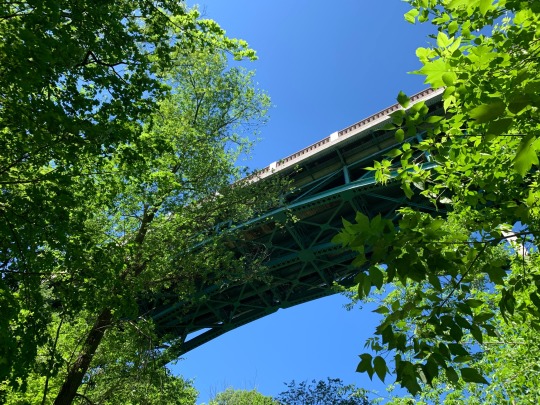

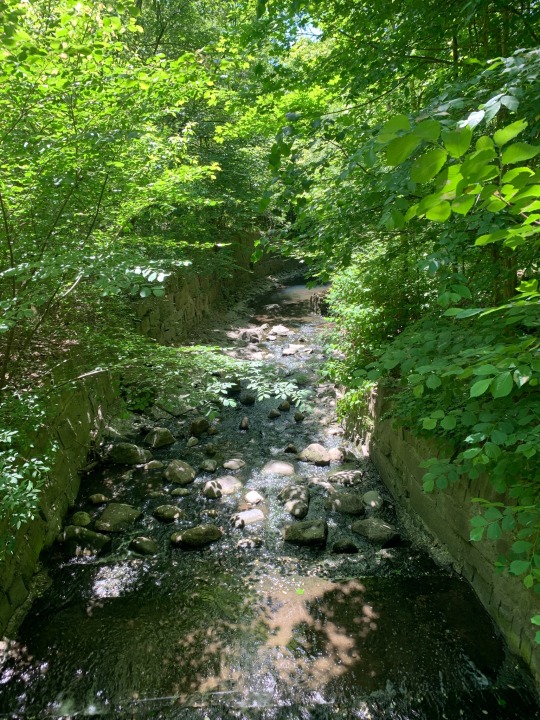
1 note
·
View note
Text
This list of books to read about is a great start. I look forward to bettering myself and become more aware - it’s time to pass the mic!






Resource is from victoriaalxndr on Twitter!
106K notes
·
View notes
Link
I must admit I have not yet made it to the Faiyum despite having been in Egypt three times already... We read about this amazing area in our books, though it must be quite a picturesque visit.
I highly recommend following the amazing posts about the Fayoum through the Twitter profile @Fayoumer.
There is also an extensive resource and guide on the Fayoum available here: https://fayoumegypt.com.
0 notes
Link
I was there in late 2019 and it’s a wonderful little museum to explore.
Now you can visit Gayer-Anderson Museum in 3D. Simply fabulous!
26 notes
·
View notes
Photo
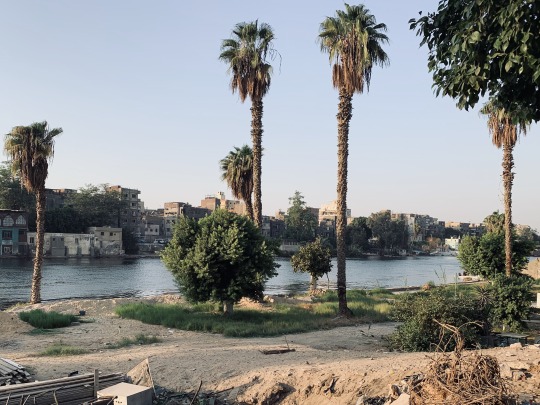
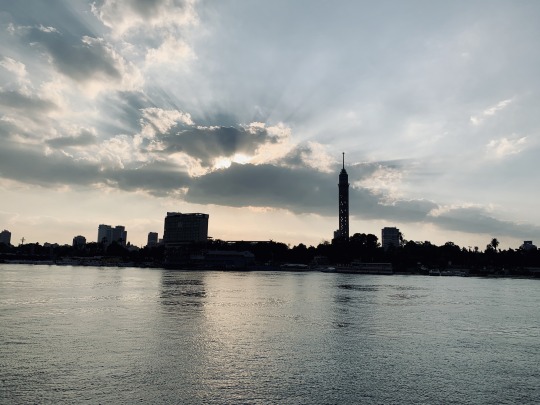
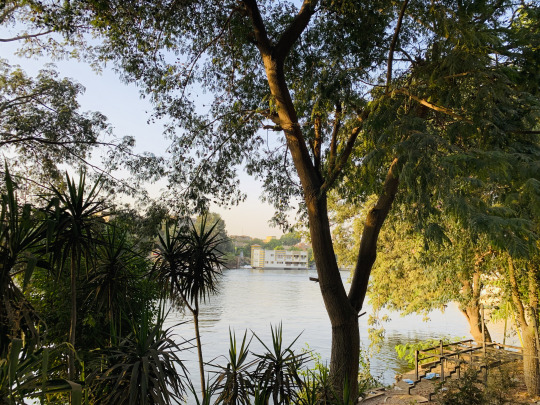
Many foreign archaeologists when they come to stay in Cairo for some time often stay in Zamalek. Making up the northern portion of Gezirah Island, many embassies and foreign institutes (such as Germany’s DAI) call this lovely island their home. A major artery leads through here and I had the pleasure to stay in a small hotel which provided plenty of comfort. Cairo is a bustling city with lots of traffic and commotion - a city full of life! Zamalek, this way, provides a “quiet” part of town... Walking around the edge of island provided some wonderful views of the Nile and its surroundings. I also had the pleasure one day when I was near the Egyptian Museum by Tahrir Square to snatch a photo of the southern part with its majestic Cairo Tower.
0 notes
Link
I opened my Prime Video account yesterday and realised I had saved this documentary on my Watchlist. As my research revolves around lapis-lazuli and in particular how the ancient Egyptians used it, the documentary sparked my interest. I’ve long been fascinated by the sources the Egyptians knew for the stone and academic scholarship almost unequivocally identifies Afghanistan as the sole source for the ancient material. The documentary did well to highlight the treacherous path to get to the mines and Gary Bowersox (whose work I am quite familiar with) takes the role of protagonist in the documentary. I found the title “Lost Mines of the Pharaohs” already misleading... Egypt certainly never got access to the mines directly. Sadly, the documentary details more about the actual journey to the mines than showing us what the mines looked like. There was really only one clip of a few seconds that showed veins and nodes of lapis-lazuli in situ.
Note: The documentary seems to be available also on YouTube.
0 notes
Video
youtube
I may be late to the party by posting this session which was part of a two-day workshop hosted at Brown University in Sept. 2016, but both speakers highlight well the importance to caring for Egypt’s heritage in different ways. The first speaker, Dr. Monica Hanna, spoke about the devastation of many cultural sites around Egypt following the 2011 revolution and the amazing work she has done in connecting the local population with their history again. The talk emphasised greater need by western missions and expeditions to work closer with Egyptians. The second speaker, Dr. Gerry Scott, updated us on the latest conservation efforts by ARCE, who have done a phenomenal job in lending a hand to Egyptian restoration projects.
1 note
·
View note